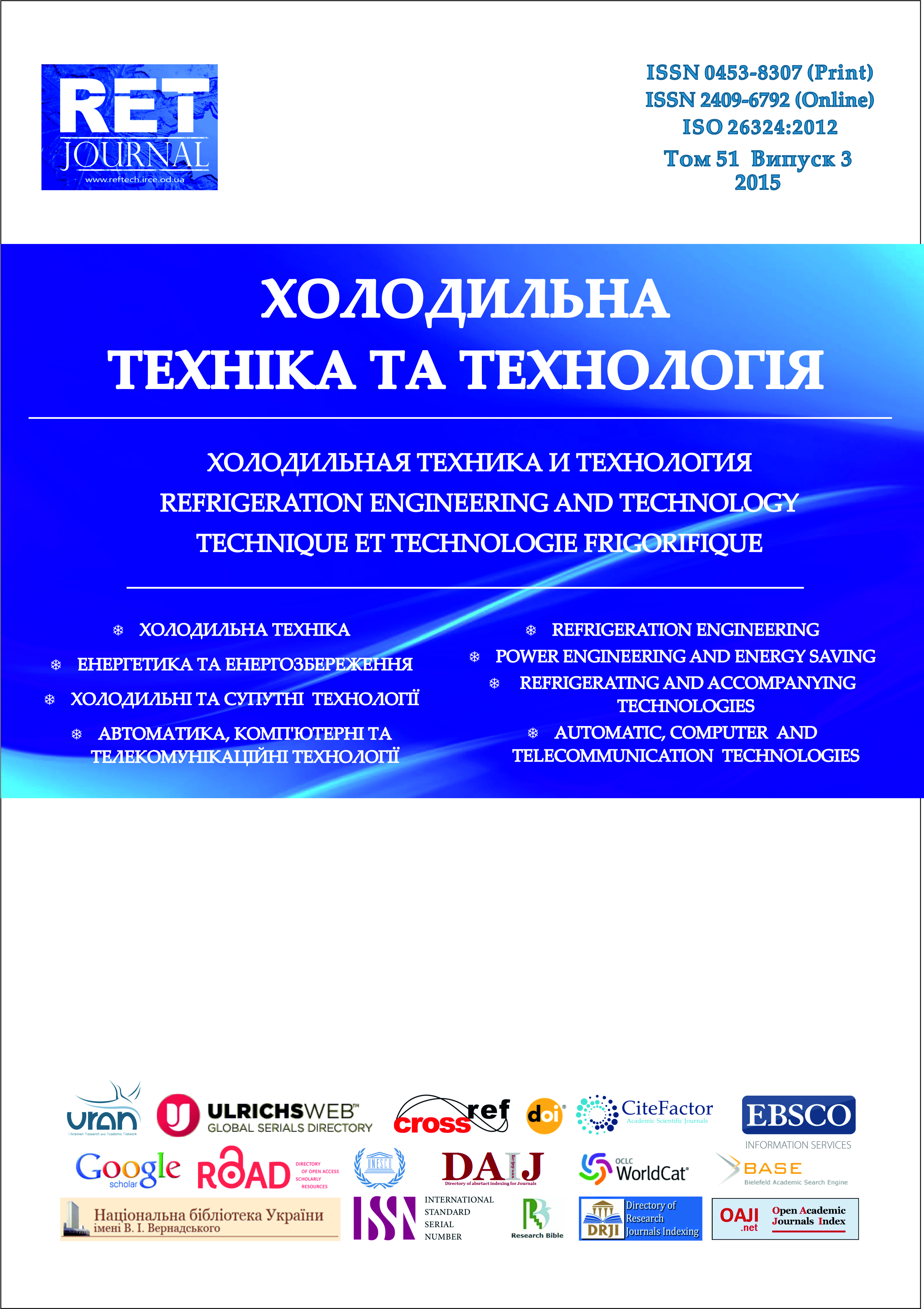GENERATION OF HEAT FLUX NEAR THE CAPILLARY IMMERSED INTO THE CAVITATING LIQUID DUE TO THE EXTERNAL ACOUSTICAL FIELD
DOI:
https://doi.org/10.15673/0453-8307.3/2015.42637Keywords:
Heat flux, Capillary, Ultrasonic cavitation, Phase transitionAbstract
We propose the simple model of the heat flux generation throw the open end of the capillary cannel submersed into liquid, where an ultrasonic field is formed. This model is based on the previous experimental research of the sonic-capillary effect. The peculiarities of them are: the excitation of cavitations strongly under the capillary cannel; the translation motion of cavities to the capillary cannel, recorded by mean of the moving image camera with the velocity of about 160000 frames per second; the local heating of liquid in capillary and temperature distribution in the capillary cannel; the gradient of temperature directed according the translation motion of the cavities. The principal distinction of our model is that the cavitation process is connected with a periodical phase transitions. Due to the directional motion of cavities to the capillary cannel, all thermodynamic processes, connected with extension of cavities and which need some quality of heat are located under the capillary cannel; the decreasing of cavities and the return of heat are located in the capillary cannel. Thus, the result heat flux forms throw the open capillary section. The proposed model is realized as a software and calculated in wide ranges of temperature, diameters of cavities, frequencies of ultrasonic. The density of heat flux was calculated for the conditions of based experiments.
References
Ceperley, Р.Н. 1985. Gain and efficiency of a short traveling wave heat engine. Journ.Acoust. Soc.Amer, 77 (3), 1239. doi:10.1121/1.421299
Swift, G.W. 1988. Thermoacoustic engines. Journ.Acoust.Soc.Amer., 84 (4), 1145-1180 doi:10.1121/1.396617
Garrett S.l., Hofler T.J. 1992. Thermoacoustic refrigeration. ASHRAE Journ. 34 (12), 28-36.
Wilen, L.A. 1998. Measurements of thermo-acoustic functions for single pores. Journ. Acoust.Soc.Amer., 103(3), 1406 doi:10.1121/1.421299
Petculescu,G., Wilen, L.A. 1999. Thermo-acoustics in a single pore with an applied temperature gradient. Journ.Acoust.Soc.Amer. 106(102) 688–694. doi:10.1121/1.427086
Backhaus,S., Swift,G.W. Patent US №6032464, от 07.03.2000
Backhaus, S, Swift. G.W 2000. A thermo-acoustic-Stirling heat engine: Detailed study. Journ.Acoust.Soc.Amer., 107 (6), 3148 doi:10.1121/1.429343
Gusev, V. 2001. Thermal wave harmonics generation in the hydrodynamical heat transport in thermoacoustics Journ.Acoust.Soc.Amer.–.109(1), 84–90. doi:10.1121/1.1332383
Petculescu, G., Wilen, L.A. 2001. High ampli-tude thermoacoustic effect in a single pore Journ. Acoust.Soc.Amer. 109(3) 942 doi:10.1121/1.1348008
Mironov, M.A. Pyatakov, P.A. Thermoacoustic refrigeration. Patent RF 2435113, pub 27.11.2011
Rosin, Yu.P., Rozina, E.Yu. 2000. Translation motion of the cavities inti the capillary cannel. Visnik ODY, 2000.-.5(3) - p.32-38.
Rozina, E.Yu., Tistruga, O.M. 2002. Experimentally research of the heat phenomena in the sonic-capillary effect. Visnik ODY, 2002, 6(3), p.170-176.
Akulichev, V.A., Alekseev, V.N., Bulanov, V.A. Periodical phase transitions in liquids.- M.: Nauka, 1986.– 280 p.
Dolinskiy, A.A., Ivanitzkiy, G.K. 2008. Heat-mass transfers and hydrodynamics in vapor-liquid dispersed systems. Kiev:Nauk. dumka, 2008, 382 p
Physical acoustics. Principles and methods. Ed. by W.P.Mason. 1964, V.1 (B) Acad.press, NewYork, London, 362 p.
Sivuchin D.V. Thermodynamics and molecular physics. M.: Nauka, 1975.– 550 p.
Rosin Yu.P., Tichonova V.S., Kostyuchek M.N. Anomaly great level pressure near the ultrasonic transducer. Ukr.Phys.Journ, 1975, 20(2), p.214-220.
Akulichev V.A., Cavitation in cryogenic and boiled liquids, M.: Nauka, 1978.– 280 p
Volkov G.A., Gruzdkov A.A., Petrov Yu.V. 2009. Cavitations stability of cryogenic liquids. Journ. Tech. Phys., 2009, 79(11), p.147-149.


